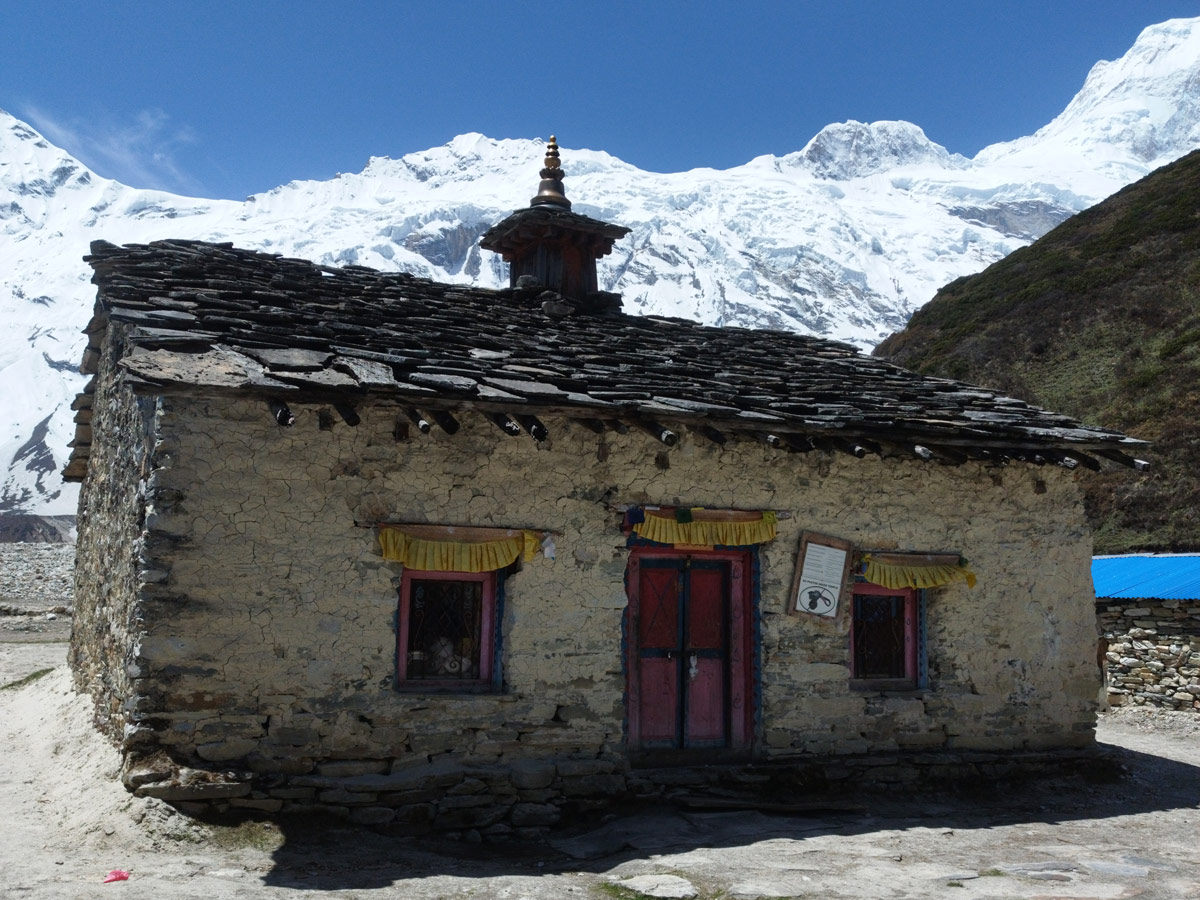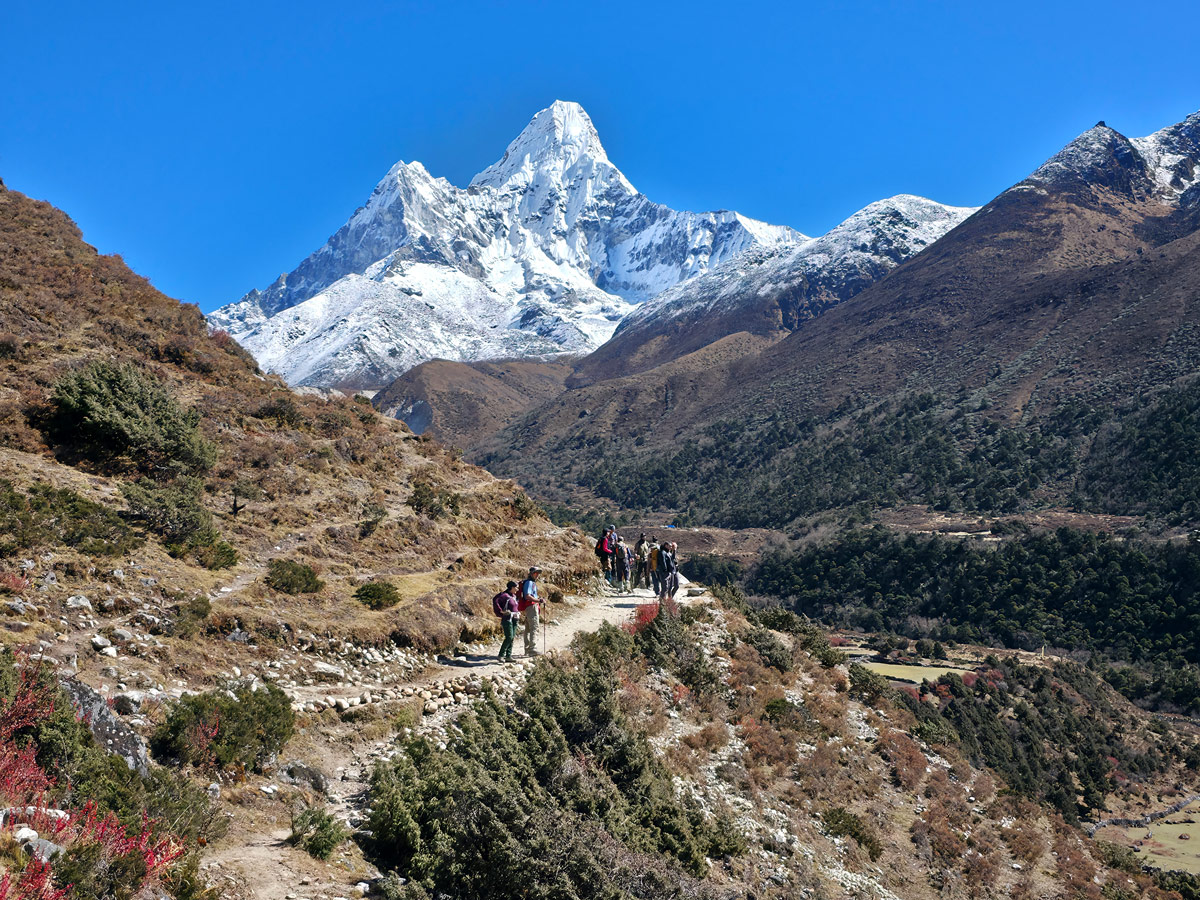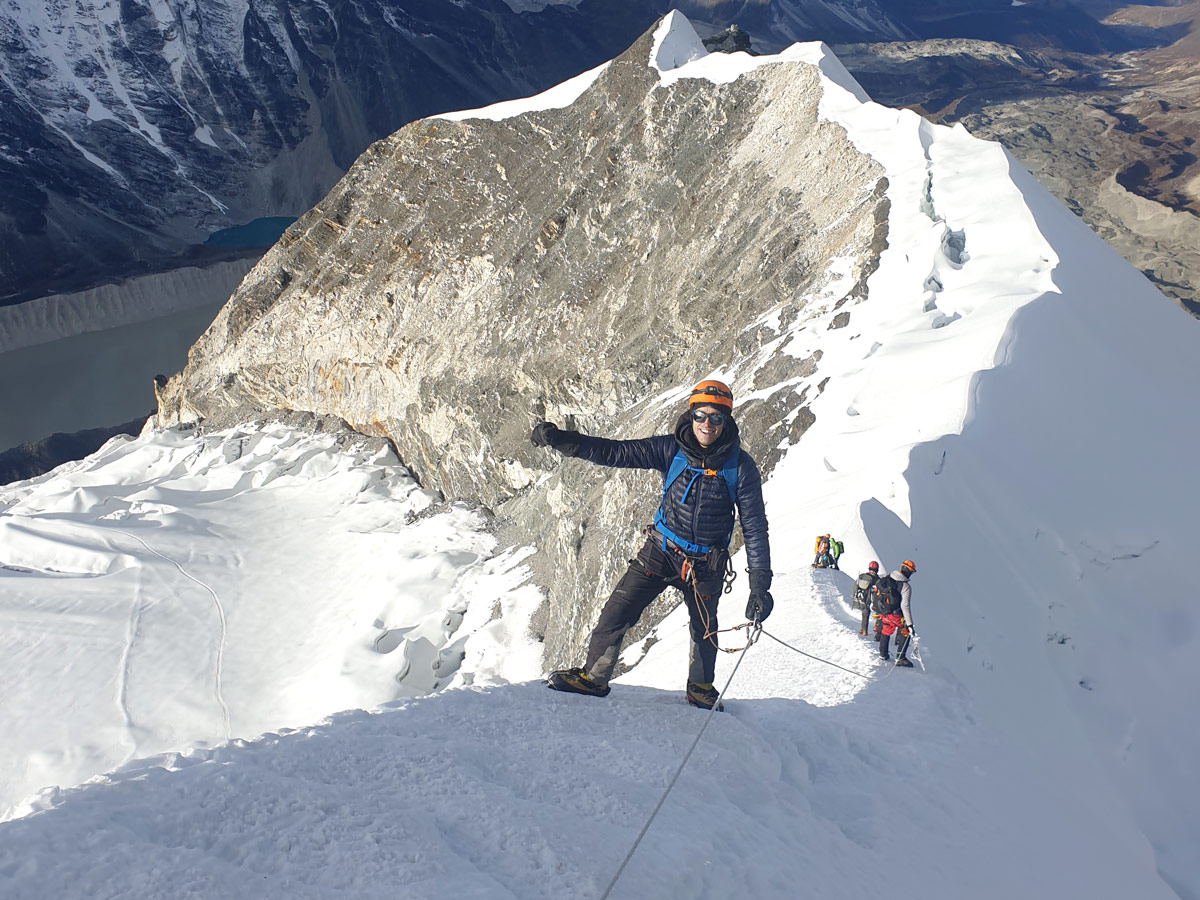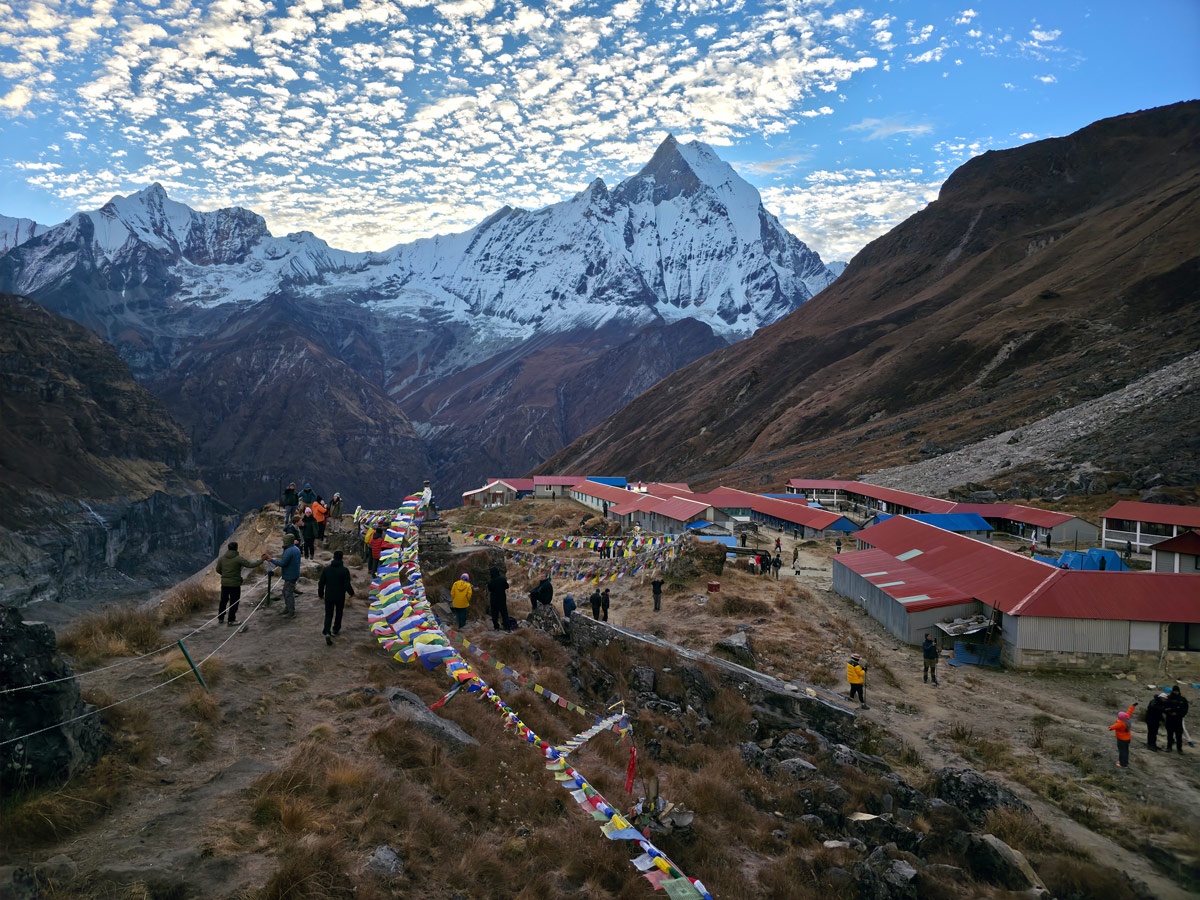Nestled in the lap of the might Himalayas, Nepal is not just famous for housing some of the best trekking routes in the world, but it is also known for its rich cultural and spiritual heritage.
Even the Himalayan giants of Nepal hold deep spiritual significance for locals and pilgrims alike who have managed to introduce a hint of spirituality amidst the thrill of trekking and mountaineering.
Due to this, the Himalayan landscape of Nepal has been dotted with numerous religious sites including temples, monasteries, shrines, stupas, and sacred lakes that draw pilgrims as well as adventurers.
Let’s have a look at some such religious sites in the Himalayas of Nepal and know more about their significance.
Significance of Religion in the Himalayas
The Himalayas are famous across the world for several reasons. While some people look forward to visiting the Himalayas for the majestic views and a unique experience in the snow, some people also look forward to the peace that awaits them in the lap of the Himalayas.
In Nepal, the Himalayas are not just a place of natural beauty but also the spiritual hub and sacred land for many as many important sages and spiritual teachers have attained high level of knowledge due to the power of the Himalayas.
Buddhism and Hinduism are the main religions followed in the Himalayas of Nepal, and in both these religions, many Himalayas like Mt. Kailash, Mt. Machhapuchhre, and more have been considered to be sacred abode of several deities.
Even the iconic Mt. Everest is called Chomolungma in Tibetan which translates to ‘Mother Goddess of the World’ and the Sherpas consider Mt. Everest to be their protector and they even do religious ceremonies before summiting the peak to show their respect.
The religious significance spans beyond the peaks and transcends into the several monasteries and temples which have been established in the Himalayas of Nepal and every year thousands of pilgrims make their way to these sites.
Therefore, mountains in the Himalayas are not just a physical entity with utmost natural beauty and might but they are also religious sanctuaries for people seeking peace and solace.
Muktinath Temple
Located at an altitude of 3,800 meters, the Muktinath temple is a significant part of the iconic Annapurna Circuit trek and also one of the reasons why you should embark on this trek.
It is an important spiritual site for both the Hindus and Buddhists as the Hindus consider it to be a place to attain salvation while the Buddhists consider it to be one of the 24 important Tantric places.
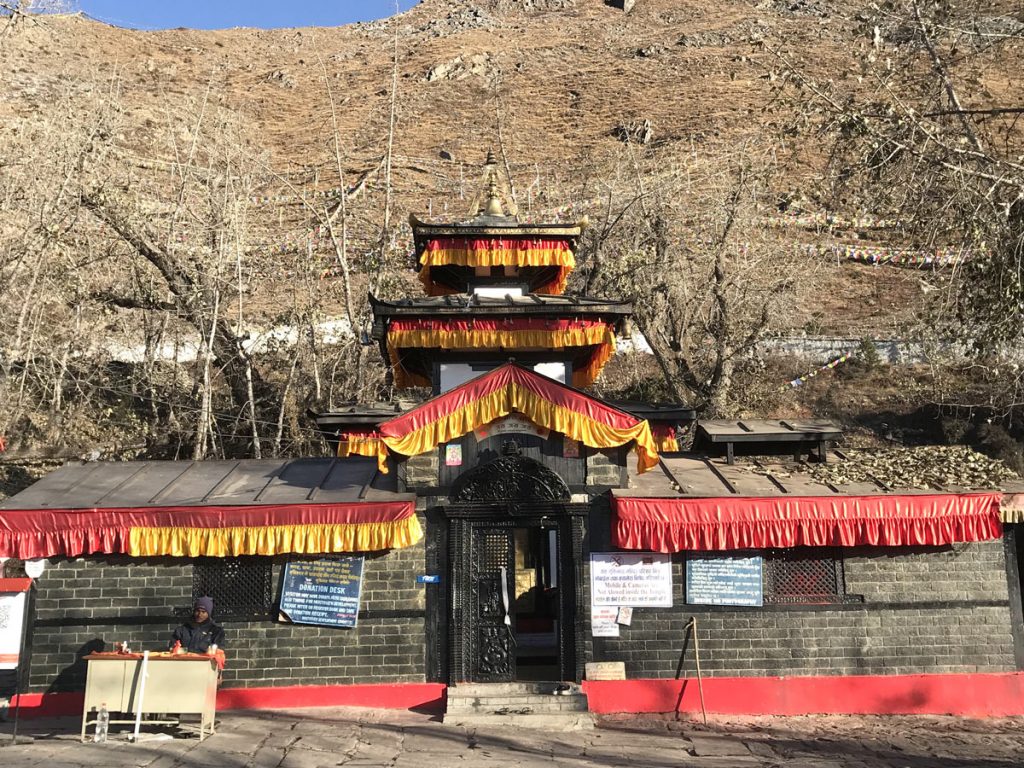
The Muktinath temple located in Mustang is dedicated to both Hindu deity Lord Vishnu and the Buddhist deity Avalokiteshvara. The temple features 108 water sprouts and an eternal flame fueled by natural gas, each symbolizing water and fire respectively.
Muktinath temple is known for adding a spiritual touch to the challenging treks in the Himalayas as one has to trek to the temple, and it is a part of some of the famous trekking routes.
Every year hundreds of devotees make their way to this mystical temple in the Himalayas. While you are at Muktinath, make sure to visit the Jwala Mai temple and spring along with Samba Gomba for a much more enhanced spiritual experience in this sacred site.
Tengboche Monastery
Located in the Khumbu region at an altitude of almost 4,000 meters and the sacred sanctuary of the Sherpa people, the Tengboche monastery is one of the most revered religious sites in the Himalayas of Nepal.
This is the largest monastery in the Sagarmatha National Park, and it was established in 1916 AD, and it is known for being the cornerstone of Tibetan Buddhism and Sherpa culture in Nepal.
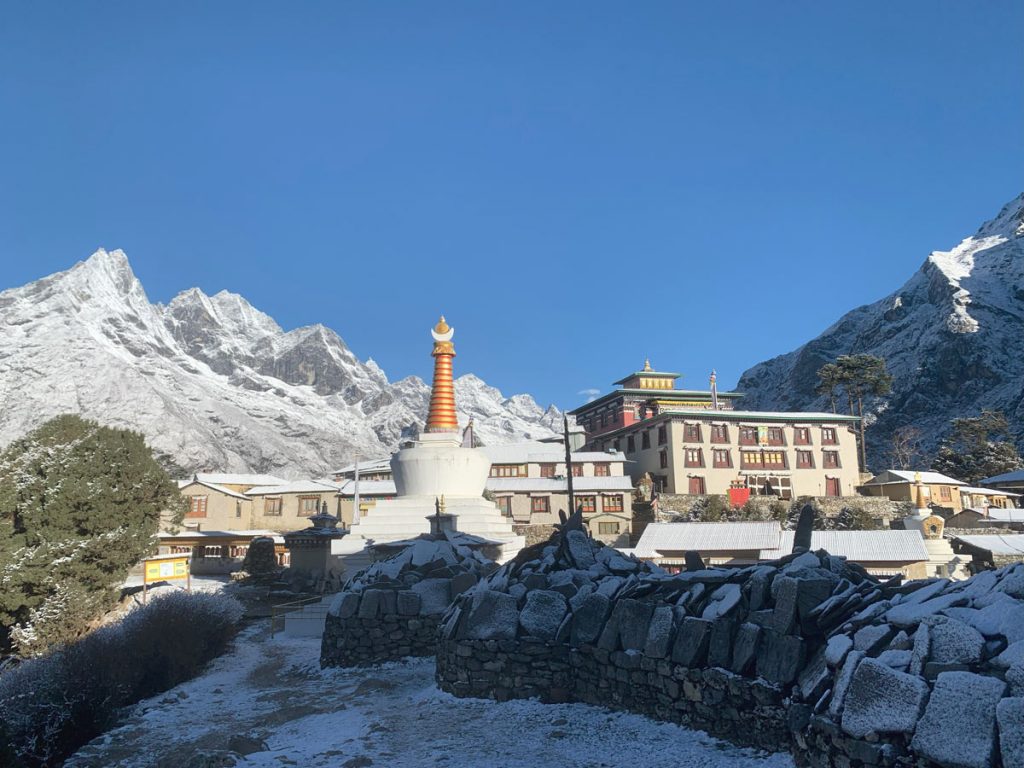
Everything from the architecture and the ritual of the monastery shares a deep similarity to the Rongbuk monastery in Tibet and it also shares a deep connection with Guru Rinpoche.
If you are embarking on the Everest Base Camp trek, this monastery is a must visit for you as you might come across some of the vibrant festivals celebrated in this monastery with tons of rituals and interesting traditions.
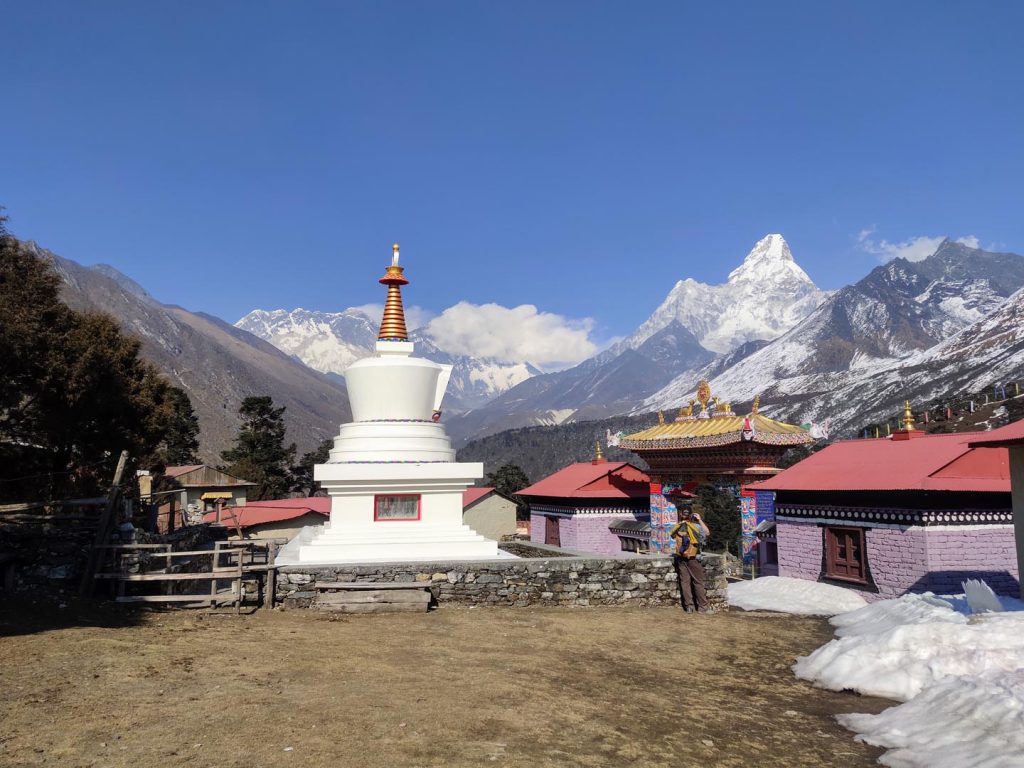
The views too are spectacular inside and outside as it is surrounded by a spectacular view of the Himalayan giants on the outside and adorned with paintings, murals, and statues on the inside.
The most significant festival observed in this monastery is the Mani Rimdu festival which is a colorful mix of masked dances, storytelling, rituals, spiritual chanting, and dramatic reenactment of historic events. Witnessing this festival is truly a treat.
Besides Mani Rimdu, other festivals like Tibetan Lhosar, Dumje, and many more are celebrated at the monastery.
Pathibhara Devi Temple
The Pathibhara Devi Temple is another sacred temple in the Himalayas which is in Taplejung district and is one of the Shakti Peeths as parts of Goddess Sati’s body are believed to have fallen here.
The temple is considered to be a very powerful one by the locals as people believe that the goddess here is a wish-fulfilling goddess which is why thousands of devotees visit the temple every year.
One has to trek to the temple, and you will come across several mountain views while also climbing a mountain trail to reach the temple. The mountain where the temple lies is in the shape of a grain container, locally called Pathi. This is where the temple gets its name from.
The temple was originally a Limbu shrine but now it is a big part of Hinduism and Buddhism too. People even believe in miraculous healing upon visiting the temple and many sacrifices are made to the goddess here.
The temple also boasts crystal clear and intimate views of the Kanchenjunga Mountain Peaks and other Himalayan giants. Therefore, the journey to Pathibhara Devi Temple is often combined with the Kanchenjunga Base Camp trek.
Gosaikunda Lake
Located within the Langtang National Park, the Gosaikunda Lake is a wonderful natural attraction which is also considered to be a pilgrimage for both Hindus and Buddhists who visit the lake every year.
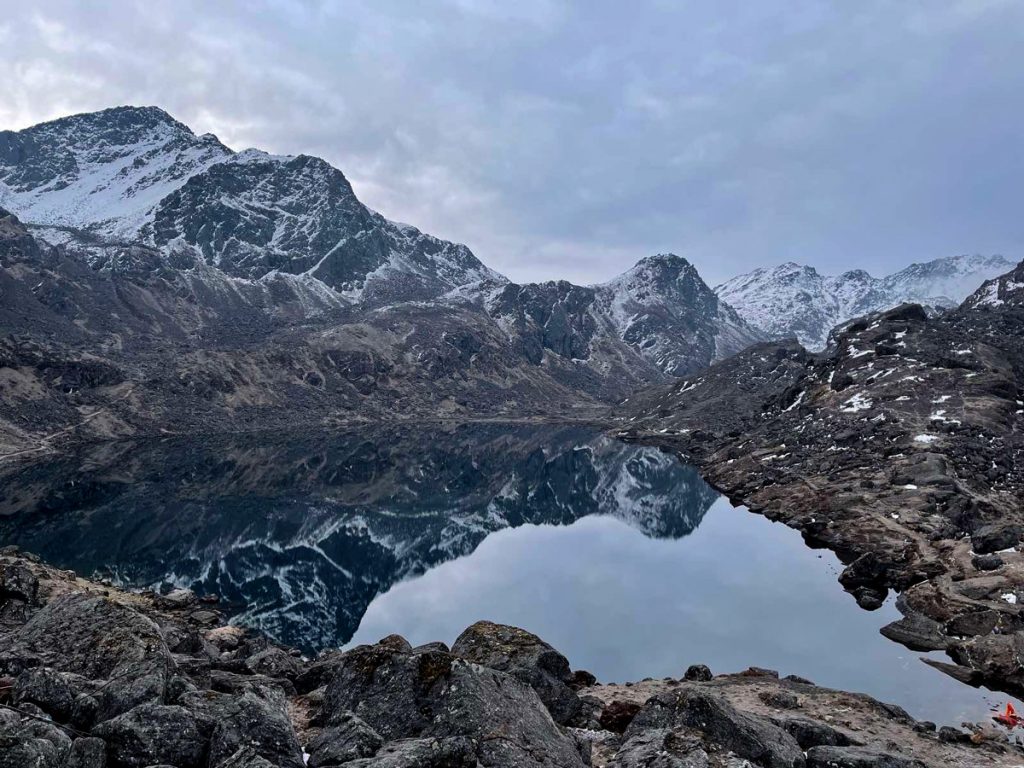
As per Hindu mythology, the lake was formed by Lord Shiva himself using his trident and that’s what makes its water so holy and revered. This crystal-water lake attracts hundreds of pilgrims, and it is a cultural heritage of the region.
A big festival takes place in the lake during a Nepali festival called Janai Purnima that usually comes around August. During this festival, the lake is adorned with several prayer flags and the surrounding is very holy while devotees take a dip in the chilly waters of the lake.
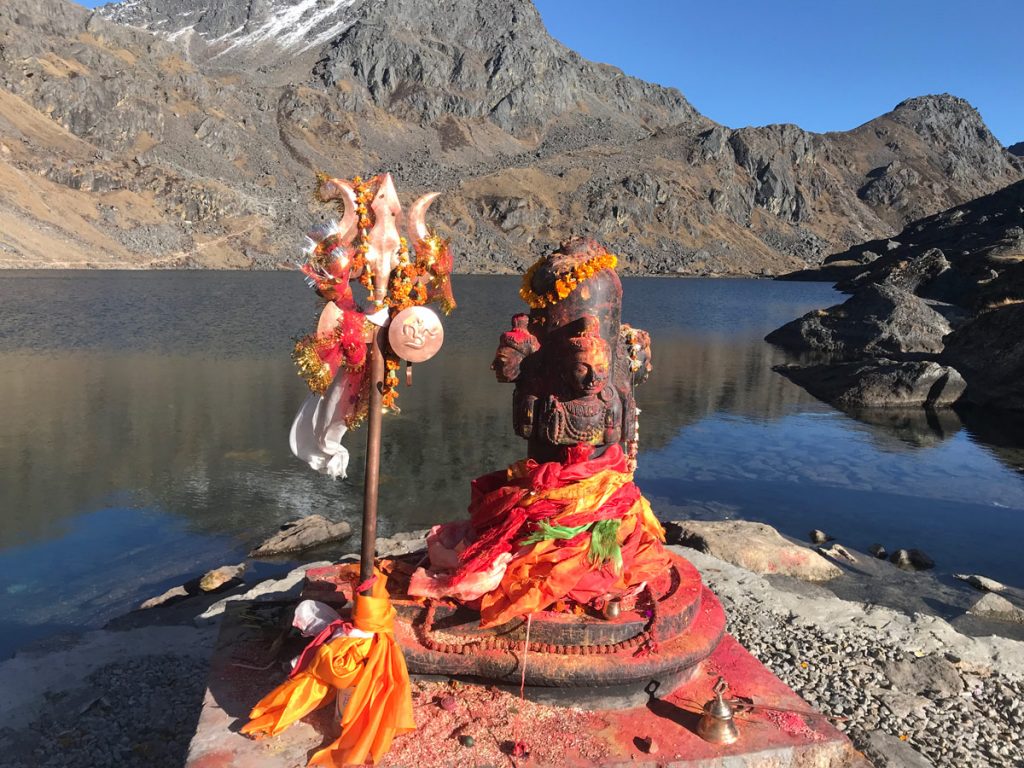
A part of the likes of Langtang Valley trek and Gosaikunda trek, this lake also boasts stunning views of the Himalayas which are even reflected on its clear waters while creating a sight to behold.
Kagbeni
Another addition to the natural attractions considered as the religious sites in the Himalayas of Nepal is the Kagbeni village in Mustang district of Nepal which has a high religious value both Hindus and Buddhists.
Also the starting point to the holy journey to Muktinath Temple, Kagbeni itself is a sacred site featuring a confluence of Jhong and Kali Gandaki rivers, where the Hindu devotees perform crucial final rites of their ancestors which is locally known as ‘shraddha’.
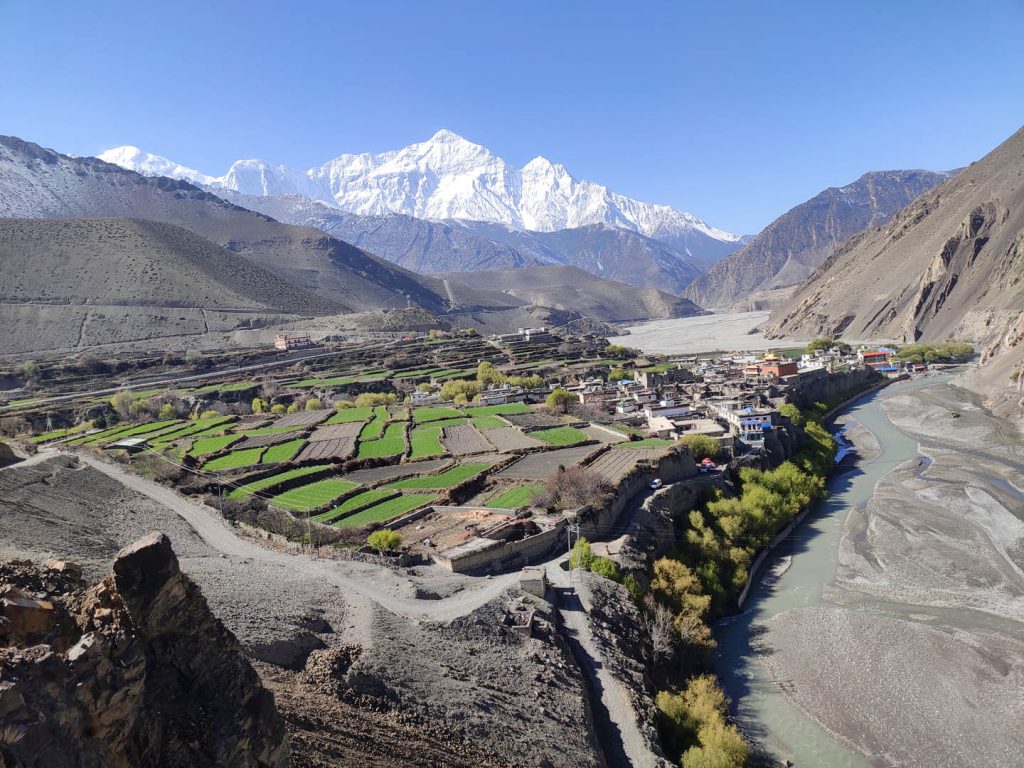
It is believed that after doing this 11-day long ritual called Pitri Puja at Kagbeni, the lost souls of the ancestors reach heaven and then bless the family forever. It can also be done after every 11 years after death.
Another reason for the high religious significance of Kagbeni is that you will find many rocks called ‘Shaligrams’ in the river and the caves around. These rocks are worshipped by Hindus in the form of Lord Vishnu.
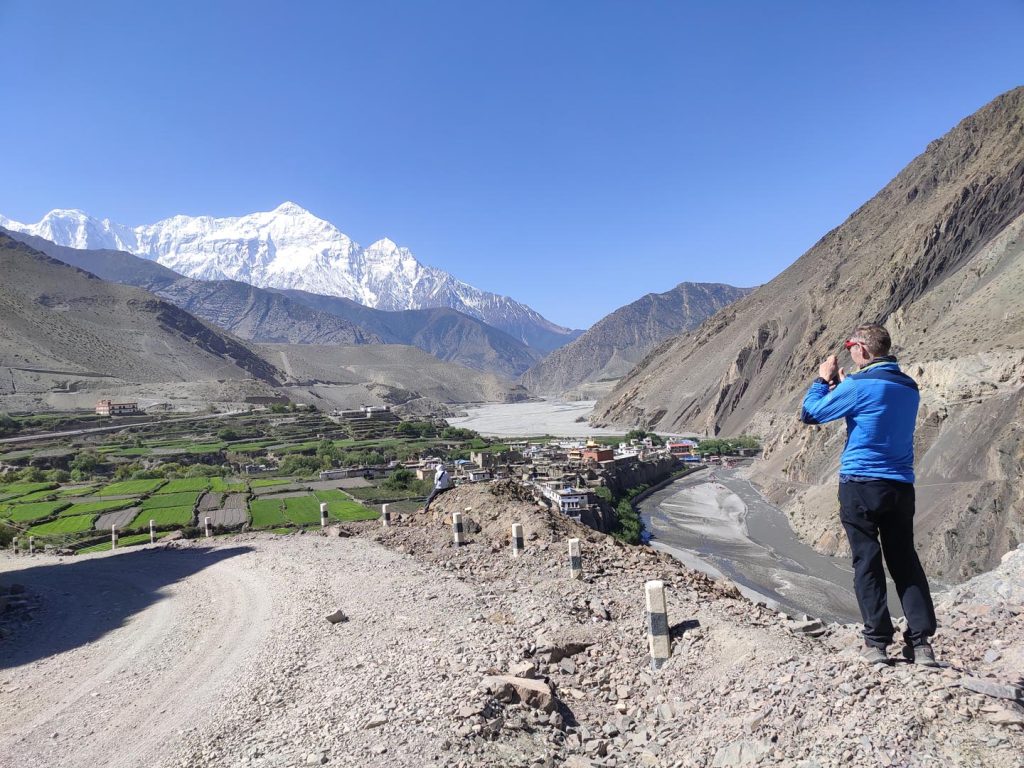
The water of Kagbeni is also considered to have purifying properties. The village is also home to several monasteries and a refuge for Tibetan culture and Buddhist practices.
It is one of the key stops in the Annapurna Circuit trek and it can also be your gateway to Upper Mustang via the Upper Mustang trek.
Braga Gompa
Another religious place to look out for during the Annapurna Circuit trek is the ancient and the largest monastery in the Manang area which is one of the best spiritual attractions around the region- the Braga Gompa.
This monastery is 600 years old and holds strong spiritual and cultural significance amidst the locals. It can be one of the rest day activities to do in Manang as well as it also treats you to stunning Himalayan views along with rustic settlements.
While the monastery looks basic from outside, the internal appearance is much more shocking as there are several paintings, murals, and statues, all depicting the teachings of Buddhism.
The place can be considered a typical relaxing spiritual site in the lap of Himalayas that is adorned by fluttering prayer flags all around and surrounded by Himalayas allowing you a peaceful spiritual escape.
Pashupatinath Temple
Located in the capital city of Nepal, the Pashupatinath Temple is considered to be one of the biggest temples of Hindu deity Lord Shiva and it is also a UNESCO World Heritage Site.
This temple is situated on the bank of the holy Bagmati river, and it means ‘Lord of Animals’ which is often proved by the frequent visits of monkeys, cows, birds, and even deer in and around the temple.
It features many small temples dedicated to each Hindu god and the main temple complex is a beautiful structure in pagoda style adorned with intricate wood carvings and a gold pinnacle.
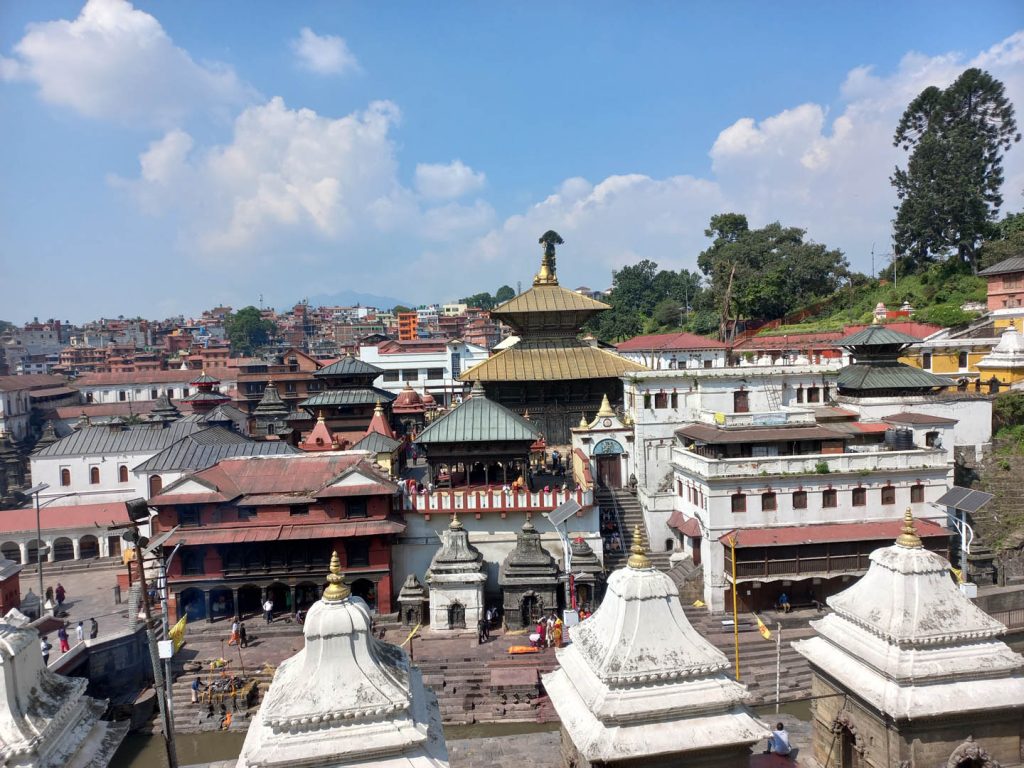
There are many things to observe while at the temple, but one main thing that might catch your attention is the funeral pyres burning at the bank of the river which is also the spot for the evening aarti which is quite a spectacle.
As you stand there, you will guaranteed be humbled as you are reminded of the temporariness of life as hundreds of people are cremated in this temple of the ‘Lord of Destruction and Recreation’ everyday as per Hindu rituals.
The key festivals to look out for while visiting the temple are Maha Shivaratri, Teej, and the Mondays of ‘Shrawan’ which is a month from Nepali calendar that coincides with mid-July to mid-August. The temple is crowded with devotees during these festivals.
Tsum Valley
The secluded treasure of the Manaslu Conservation Area– Tsum valley has recently started attracting hundreds of tourists for being one of the off-the-beaten path treks of Nepal. However, the valley too features several religious sites making it culturally significant too.
Often referred to as the ‘hidden valley’, the Tsum Valley is home to several ancient monasteries like Rachen Gumba, Mu Gumba, and Lungdang Gumba which are the more popular ones among the total 23 monasteries in the valley.
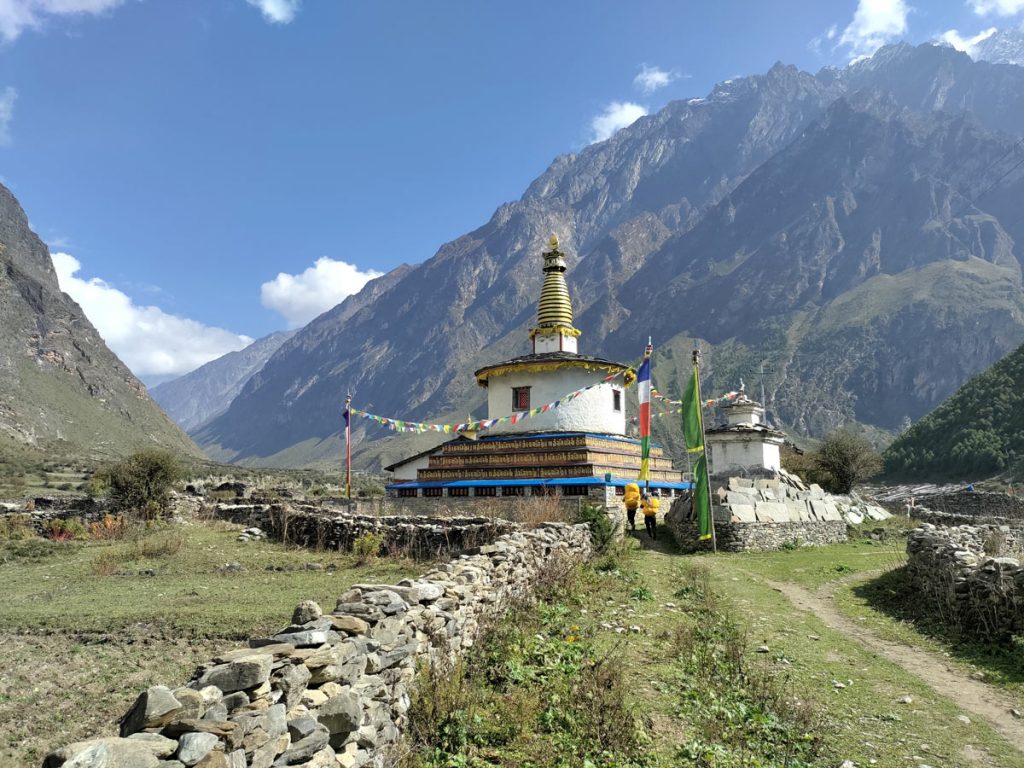
Buddhism is predominant in the Tsum Valley, and it is also known as the living museum of Tibetan Buddhist traditions for its rich Buddhist heritage which has been protected overtime due to the isolation of the valley.
Every corner of the valley reflects its deep spiritual values as you will find the valley dotted with chortens, mani walls, prayer flags, monasteries, manes, lungdars, and mandams.
You can enjoy this spiritual respite in the Himalayas through treks like the Tsum Valley trek or even combine it with secluded places of the region and go on an elaborate exploration with the Manaslu Circuit trek.
Kyanjin Gompa
Located in the conserved area of the Langtang National Park, the Kyanjin Gompa is one of those religious sites in the Himalayas of Nepal which are famed for their unique origin stories.
The monastery gets its name from the legend which says that it was built on a rock which resembled the ribs of a camel. Therefore, the name Kyanjin where Kyan means camel and Jin means ribs.
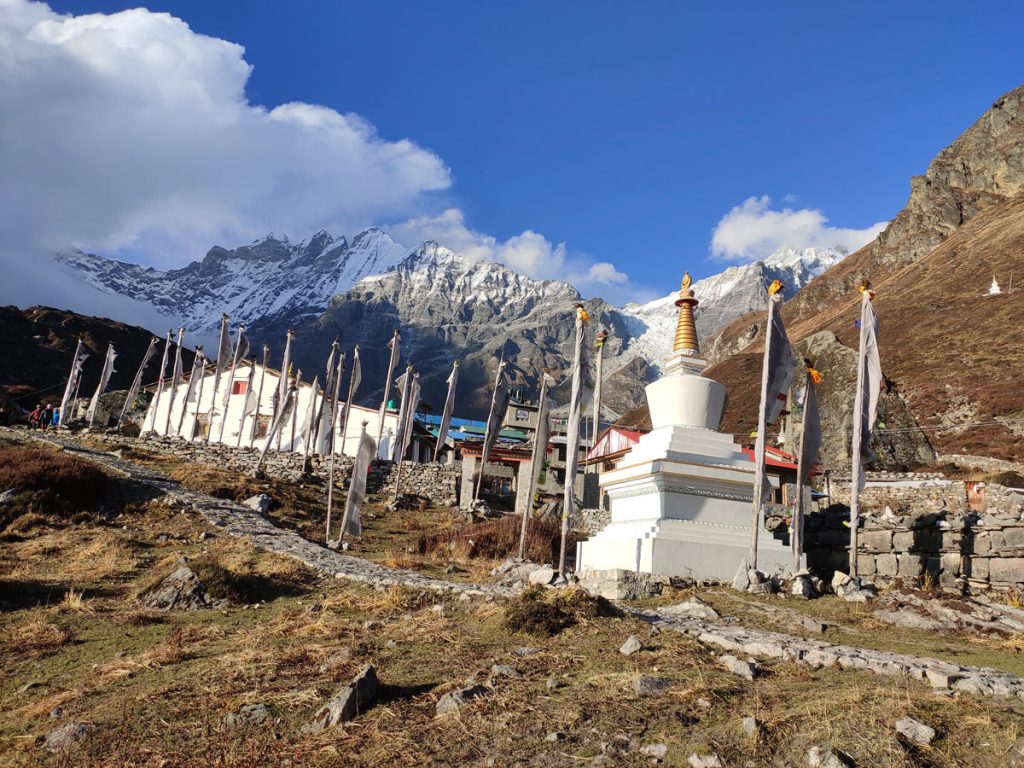
This almost 300-year-old monastery is regarded for its cultural and historical significance in the Langtang region as it stands tall reflecting the Tibetan culture and the nuances of Tibetan art.
Besides the religious significance, you can also get a unique sense of peace upon visiting the monastery as you meditate amidst the serene environment and fluttering prayer flags.
Pungyen Gompa
If you are visiting the Manaslu region for a remote and rugged experience, do not miss out on the experience that you will have at Pungyen Gompa. While it allows you to acclimatize well for the trek, it will also leave you with a contended feeling.
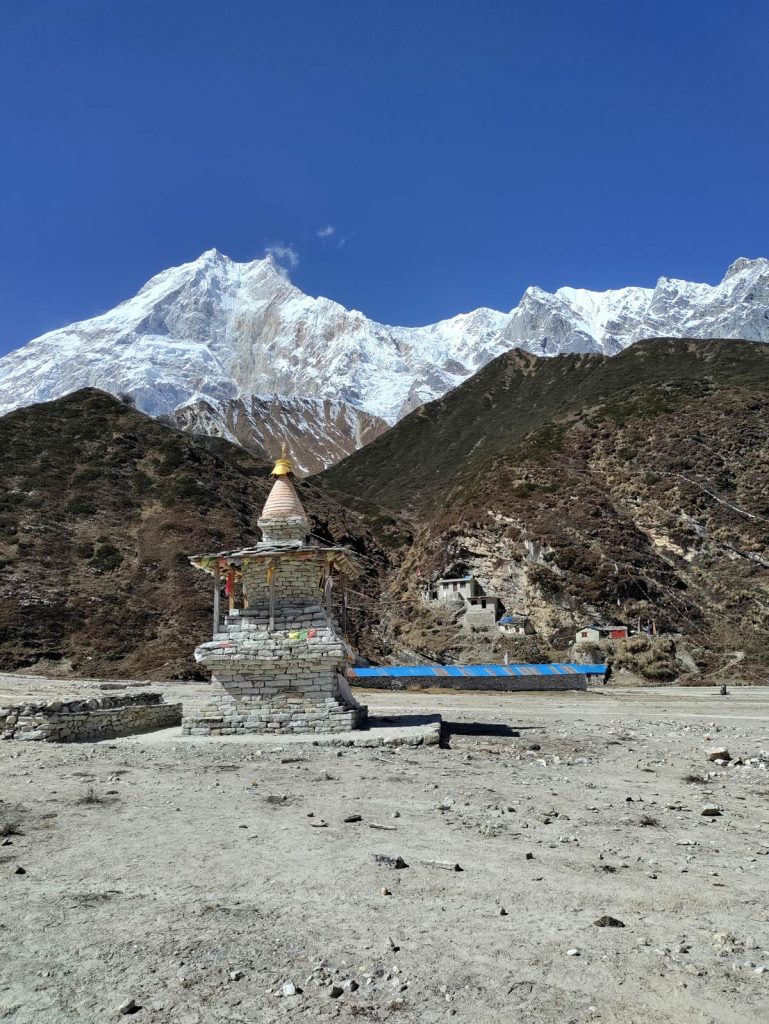
You will see that the monastery harbors lots of Tibetan cultures and traditions along with many arts and murals placed there depicting the stories and teachings of Buddhism.
Amidst the silent and remote Himalayan landscapes of the Manaslu region, Pungyen Gompa can be a perfect religious site which can cater to your spiritual needs as well as quench your thirst for a peaceful retreat.
Etiquettes to Follow While Visiting
All of these religious places in the Himalayas of Nepal including many others are considered very sacred sites by the locals. Therefore, to be respectful and also to make your visit more meaningful, it is important to adhere to a set of etiquettes:
- Dress modestly whenever you are visiting any of these places as showing skin and revealing clothing is considered to be disrespectful. Wear clothes that cover your shoulders and legs like long skirts, pants, and shirts or local traditional wear.
- These sites are places of worship so make sure to maintain silence as people might be praying around you.
- Open your shoes before entering the temples and shrines.
- If you encounter priests or monks, greet them with a gentle bow, folded hands, and a warm smile.
- Avoid clicking pictures without permission while inside the temple. Strictly avoid flash photography.
